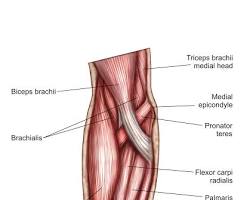
Building muscle strength and size is a key goal for many athletes and fitness enthusiasts. Traditional resistance training is a proven method, but researchers are constantly exploring ways to optimize training programs. Isometric training, which involves contracting muscles without movement, has emerged as a potential option.
A recent study published in the International Journal of Environmental Research and Public Health investigated the effects of different isometric training programs on the elbow flexor muscles, which are responsible for bending your elbow.
The study divided 16 men into two groups. One group followed a program focused on maximizing strength (ST), while the other combined high- and low-intensity exercises aimed at building both strength and size (COMB). Both groups underwent a familiarization phase for 3 weeks before embarking on a 6-week specialized training program.
Elbow Flexor Muscles: The Power Behind Bending Your Arm
The ability to bend your elbow, a seemingly simple movement, relies on the coordinated effort of several muscles. These muscles, known as the elbow flexors, work together to bring your forearm towards your upper arm. Here’s a closer look at the key players:
Biceps Brachii: This iconic muscle sits at the front of your upper arm and has two distinct parts, the long head and the short head. Interestingly, the biceps brachii actually crosses over both the shoulder and elbow joints. While it plays a role in shoulder flexion as well, its primary function is bending the elbow.

Brachialis: This muscle lies underneath the biceps brachii. It originates from the lower half of the humerus and inserts into the ulna. It is a strong elbow flexor and is particularly active when the forearm is pronated.

Brachioradialis: This muscle is located on the forearm and runs from the distal end of the humerus to the distal end of the radius. It helps flex the elbow, particularly in a mid-position between pronation and supination.

These muscles work synergistically to flex the elbow joint, allowing movements such as bringing the hand toward the shoulder.
Key Findings:
Muscle Size:
The combination program (COMB) led to a significant increase in muscle size compared to the strength-focused program (ST). This suggests that incorporating low-intensity exercises that challenge you to fatigue (voluntary failure) can be beneficial for muscle growth.
Strength:
Interestingly, both programs resulted in improved maximal voluntary contraction (MVC), a measure of strength. However, the relative increase in strength compared to muscle size (MVC/muscle cross-sectional area) was slightly lower in the combination group. This implies that while both programs improved strength, the combination approach might have led to a slightly smaller relative strength gain compared to the size increase.
Training Adaptations:
The study highlights the importance of an adaptation period in resistance training. After the initial 3 weeks, the specialized programs started to show distinct effects on muscle size and function. The combination program led to a more significant increase in muscle size compared to the strength-focused program.
Takeaway:
This study suggests that combining high- and low-intensity isometric training can effectively improve both muscle size and function in the elbow flexors. However, it’s important to note that extended training beyond the initial familiarization period may not necessarily lead to further gains.
Future Implications:
This research provides valuable insights for designing resistance training programs aimed at building muscle strength and size. Future studies could explore the long-term effects of different training modalities and their application to various muscle groups and populations.
Conclusion:
In the pursuit of bigger and stronger arms, the balance between high- and low-intensity isometric training appears to be crucial. By understanding the nuances of how different training approaches impact muscle size and function, individuals can tailor their workouts to achieve optimal results. Isometric training holds promise as a valuable tool in the arsenal of muscle-building strategies, offering new avenues for athletes and fitness enthusiasts to explore on their quest for peak performance and physique enhancement.
Source:
Zou, Z., Lan, C., & Yao, J. (2023). Effects of Different Isometric Training Programs on Muscle Size and Function in the Elbow Flexors. International Journal of Environmental Research and Public Health, 20(5), 3837. Published online 2023 Feb 21.

